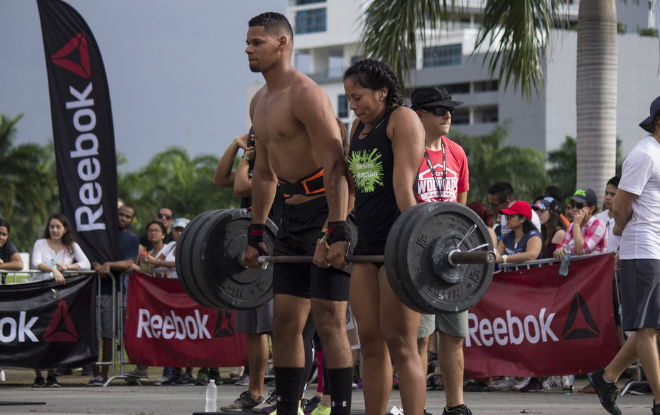Should Hockey Players Train CrossFit (Part 4)

Part 4 of Should Hockey Players Train CrossFit?
If you haven’t read the first three parts of why hockey players shouldn’t train CrossFit, I would suggest doing that first. Here are the links for Part 1, Part 2, and Part 3.
The first three parts of this series of articles shouldn’t have been overly complicated and the concepts should have been fairly easy to grasp. During the last part, I’m going to get into the specifics of conditioning and why you need to STOP doing CrossFit and that this style of training is preventing you from becoming the best hockey player possible.
POINT SIX: Energy system development
The last thing I want to cover is the energy demands hockey players need and how CrossFit doesn’t fulfill these needs. Hockey is very anaerobic (short bursts) with an slight undertone aerobic (longer durations) demand. The reason you need a little aerobic capacity is that this will help improve recovery between shifts and also between games and or practices. The most important system hockey players need is the anaerobic system. Making sure hockey players don’t develop their aerobic systems too greatly, they must keep their endurance work (with & without weights) to a minimum. Performing high volume of repetitions in the gym or on the track will promote too much endurance adaptation and diminish the development of strength, power, and speed. You can’t develop power and or speed with too much volume.
Muscles respond very well the stimulus presented to them. If you want to get stronger, then make sure you present your muscles with heavy enough weights to obtain that response. Power and speed are no different. Since hockey players require so much power and speed during a game, we as strength and conditioning coaches must provide the correct type of stimulus during training to the athlete in order to get the correct adaptation.
Since CrossFit and the style of training that requires the athlete to perform as many repetitions (doesn’t matter the exercise) as possible in a certain time frame (greater than 120s) will actually train more of the aerboic energy system than the anaerobic system. This is because it’s impossible to train at 90-95% of your max for that duration. If you think you can, ask yourself this question. “How long does it take me to sprint 50m?” Or even better yet, actually sprint 50m. Why 50m? most sprints in hockey are short in nature and 50m will really showcase how strong your anaerobic alactic system is. Once you have this number, multiply it by 10 and see if you can sprint 500m in that exact amount of time. For example, if you can sprint 50m in 5.5 seconds, you’d multiply 5.5×10 and then see if you can sprint 500m in 55 seconds.
Chances are you can’t perform the above example and if you can it would actually mean that you’re not as explosive and powerful as you could be. The body uses different fuels depending on the demand it is presented with. Without getting too complex, I’m going to break it down like this. Anything done at maximal or near-maximal effort (less than 20 seconds of work) will develop the anaerobic alactic system. From 20 seconds to 120 seconds it’ll shift to the anaerobic lactic system, and from 120 seconds and beyond the aerobic system is the primary system involved.
It doesn’t matter if you’re running, sprinting, or using weights as your stimulus. The energy system will adapt to the duration of the stimulus that it’s being provided. When looking at the average National Hockey League player, he has about 7-12 shifts per period lasting 60-90 seconds. But within that time frame, the player will only be skating at a max effort of 90-100% for 4-10 sprints which covers distances between 15-26 meters. That means, they’re only skating hard for 12-30 seconds of the total shift (60-90s). When looking at this data, it would make the most logical sense to train within this time frame when performing weight lifting exercises but more importantly when performing speed, acceleration and conditioning drills.
SUMMARY
Let’s sum the four parts up and everything that we’ve learned.
- If you want general results then train without specificity but if you want precise results than make sure your training is accurate to your goals and having specific intent that coincide with the demands of hockey.
- Training for CrossFit is very specific to the competency of CrossFit and the transferability to hockey isn’t that great.
- Fitness variables compete with one another, so when you train for power you’ll get powerful and when you train for endurance you’ll be able to go longer but you can’t train for maximal power and endurance at the same time.
- It’s impossible to train the mechanics of fast-twitch muscle fibers while at the same time trying to enhance the fatigue resiliency of the slow-twitch fibers. Performing this style of training as they do in CrossFit will develop a poorer specialized athlete.
Hopefully, this all made sense and that you’re on the same page as me and you can see that it’s very counterproductive for hockey players to train this style if they want to become the best possible player they can become.